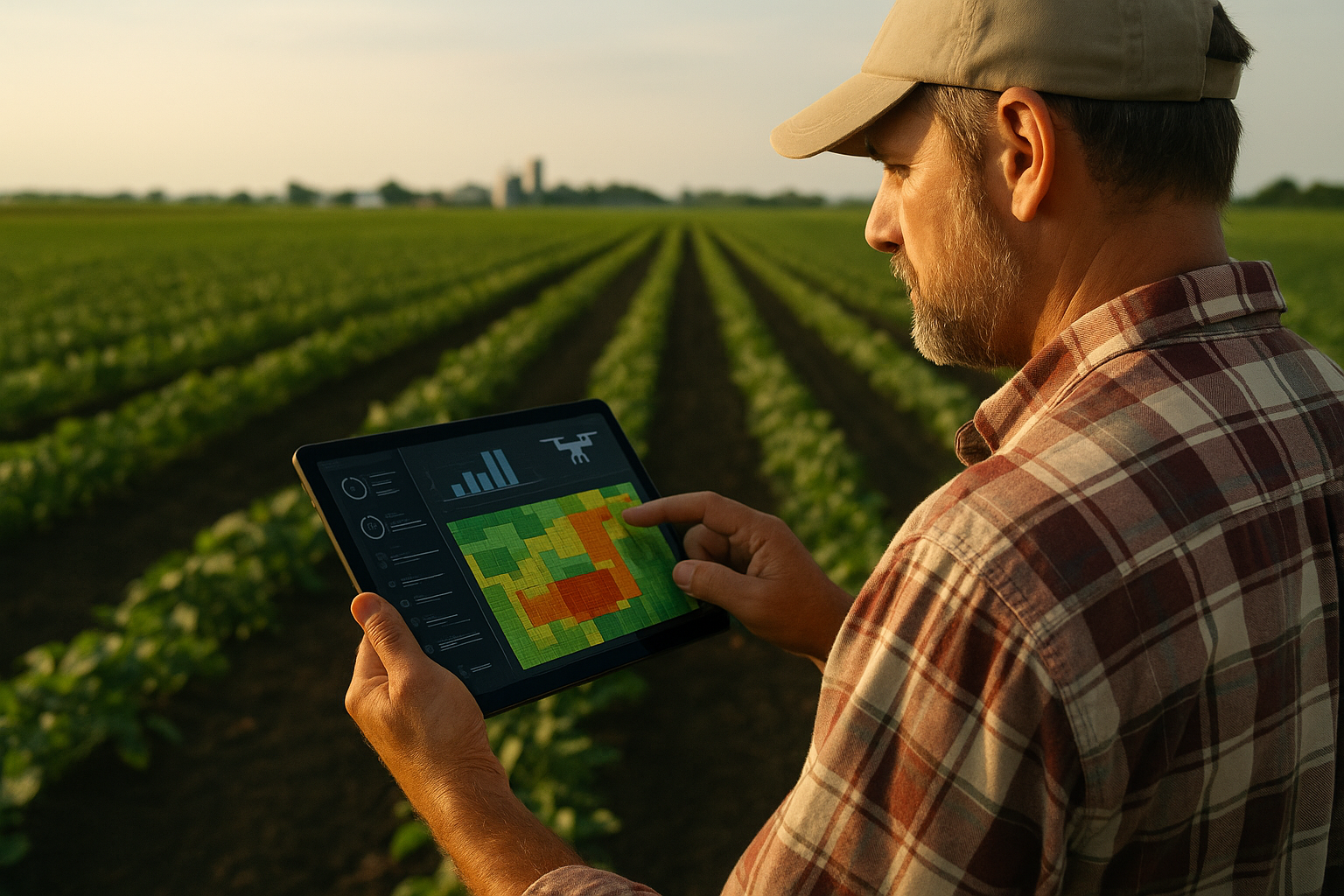Patents and start-ups drive next wave of AI-powered agricultural innovation
The findings reveal that academic research acts as a strong driver for both patents and start-up formation, indicating that scientific knowledge continues to be a foundational source of long-term innovation. However, patents play an equally influential role as leading indicators, often predicting subsequent increases in project funding and start-up activity. This suggests that intellectual property protection remains a cornerstone of innovation diffusion and commercial confidence.

Artificial intelligence (AI) is transforming agriculture at an unprecedented scale, but understanding how innovation actually develops within this space has remained elusive. A new academic study published in Agriculture (MDPI) provides one of the most comprehensive analyses yet of how AI-driven agricultural innovation evolves.
The paper, titled "The Innovation Lifecycle of AI-Driven Agriculture: Causal Dynamics in University–Industry–Research Collaboration", traces the causal relationships connecting research, patents, projects, and start-ups across nearly four decades of data. By examining how these stages interact from 1985 to 2023, the study identifies where breakthroughs emerge, what drives them forward, and how collaboration between universities, industry, and research institutions fuels sustainable technological advancement in the farming sector.
How innovation in AI-driven agriculture begins and evolves
The research explores a key question: How does innovation in AI-based agriculture actually progress from knowledge to market application? To answer this, the authors analyzed extensive datasets from four global repositories: Web of Science for scientific publications, CORDIS for European Union–funded projects, WIPO for international patents, and Crunchbase for AI–agriculture start-ups.
The analysis reveals a clear but non-linear innovation path. Rather than beginning with academic research and ending with commercialization, as traditional innovation models suggest, the AI–agriculture cycle often starts with entrepreneurial initiatives. Start-up activity tends to precede project funding and academic publishing, indicating that industry-led experimentation frequently sparks the scientific validation process. From there, research outcomes begin to influence patents, which later reinforce new rounds of commercial activity.
This inverted cycle, start-ups leading to projects, then research, and finally patents, demonstrates how the modern innovation ecosystem has shifted. The study attributes this to the agility of start-ups and the growing role of private sector funding in driving applied innovation.
The researchers also identified key "knee points" marking moments of rapid acceleration across the four stages. Start-up growth peaked between 2014 and 2017, followed by project expansion from 2017 to 2022, a surge in research publications from 2018 to 2023, and a wave of patent filings from 2019 to 2021. Together, these periods map the most dynamic phase of AI adoption in agriculture, coinciding with major European funding programs such as Horizon 2020 and the global boom in precision farming technologies.
What drives the causal links in agricultural innovation
The study further investigates the causal relationships connecting the various innovation stages. Using advanced econometric tools such as Granger causality analysis, impulse response modeling, and cross-correlation, the authors traced how one type of innovation activity triggers another over time.
The findings reveal that academic research acts as a strong driver for both patents and start-up formation, indicating that scientific knowledge continues to be a foundational source of long-term innovation. However, patents play an equally influential role as leading indicators, often predicting subsequent increases in project funding and start-up activity. This suggests that intellectual property protection remains a cornerstone of innovation diffusion and commercial confidence.
Interestingly, start-ups, while instrumental in initiating early-stage innovation, show limited feedback influence on upstream research. Instead, they function as agile endpoints of innovation cycles, where ideas are tested and commercialized. Projects serve as crucial connectors, translating academic findings into applied solutions.
The study also identifies that the relationship between projects and research is less mutually reinforcing than expected. This gap, according to the authors, signals the need for more coordinated policies linking research institutions and funding agencies to industry initiatives. Strengthening these links would help align innovation priorities and accelerate technology transfer from universities to farms.
Across subdomains, the causal dynamics also vary. The strongest growth occurred in crop management, sustainable farming, and plant disease control, reflecting global priorities for food security and environmental sustainability. By contrast, soil management and irrigation technologies reached maturity earlier, stabilizing in development after 2022.
Where AI and collaboration are shaping the future of farming
The findings raise a broader question: What does this innovation cycle mean for the future of agriculture? The authors conclude that the AI–agriculture ecosystem is evolving into a complex, multi-layered structure that depends heavily on collaboration among universities, industries, and research organizations.
In practical terms, this means that technological progress in agriculture is no longer the result of isolated research but a collective process of continuous interaction. Academic institutions provide foundational knowledge, industries bring implementation capabilities, and start-ups serve as accelerators translating theory into market-ready solutions.
However, the study warns that such a system must be carefully managed to avoid fragmentation. When research, patents, and projects evolve independently, innovation efficiency declines. Effective coordination mechanisms, such as public–private partnerships, incubators, and technology transfer programs, can ensure that AI advancements benefit the agricultural sector as a whole rather than remaining confined to niche applications.
The research also underscores the growing role of policy and funding in shaping innovation outcomes. Programs under the European Union's Green Deal and the Common Agricultural Policy are seen as instrumental in sustaining AI–agriculture development. Yet the authors stress that policy support should extend beyond financing to include governance frameworks that promote ethical AI, open data sharing, and equitable access to technology across regions.
Implications for global agriculture and research policy
For policymakers, understanding the causal sequencing of innovation, from start-ups to patents, can guide better funding strategies that align academic research with market demand.
For universities, the insights highlight the importance of interdisciplinary collaborations and applied research that anticipates industry needs.
For entrepreneurs, the data confirm that early-stage innovation in AI and agriculture thrives when supported by a strong knowledge base and protected intellectual property.
- FIRST PUBLISHED IN:
- Devdiscourse









